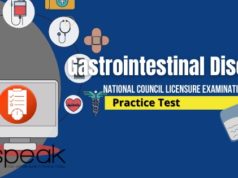1. Answer: C. Descriptive Research – This type of research describes the current situation in a given period of time.
2. Answer: B. Exploration – Exploratory research is an extension of descriptive research and is more oriented towards the discovery of relationships. Prescription research is intended for both research and practice. Prediction and control may contain a prediction of casualty, and control of the occurrence of casualty. Explanation research is a type of research that sought after predictions that should be tested with research.
3. Answer: D. Debriefing – This is the process wherein the subjects of the research must be able to understand what are they about the undergo. This is the fundamental right of being informed.
4. Answer: B. Anonymity – This is the fundamental right of individuals who participate in research. Being anonymous may place the individual respondent’s information to be free from prejudice. Linking the information from the source or participant is prohibited.
5. Answer: B. “This discussion should only be confined within this group of people. Any information discussed should not be told publicly.” – Confidentiality of information means that any information discussed in a certain period of time should not be made available publicly.
6. Answer: A. This study aims to determine the level of knowledge and practice of prevention of needle prick injuries of Staff Nurses in a certain private hospital. – A general objective involves the broad concept of the study. The other options were examples of specific objectives.
7. Answer: A. This study is for nursing researchers in the future. – This is not a specific objective rather it is a statement of who will be able to benefit from the study.
8. Answer: B. Questionnaire – This is the best data-gathering tool. A structured questionnaire can gather precise information.
9.Answer: A. Limited to the hospital personnel of a private hospital – The study is focused only on nursing personnel. The statement includes hospital personnel which is not specific.
10. Answer: C. There is a significant relationship between the knowledge and sociodemographic profile of staff nurses – This is a positive statement of a hypothesis.
11. Answer: C. Implement planned study – This is similar to the part of nursing process – intervenes. This activity involves consideration of ethical standards.
12. Answer: A. Select a design plan – As the item denotes, there is a clue already – plan.
13. Answer: B. gather, analyze relevant information – Gathering and analyzing the information can lead to selecting the best solution, this is where implementing the planned study comes in when using the Research perspective.
14. Answer: B. Formulate a problem, define variables – A hypothesis is a scientific guess which is similar to making inferences when it comes to the Nursing Process perspective.
15. Answer: B. Plan: Theorize – The planning stage in the nursing process involves determining information needs for the problem
16. Answer: B. Talents – Research skills rather than using the term talent is more appropriate. In research all of the ideas must be stated in a technical form rather than in flowery words.
17. Answer: C. Reveal what is the problem – This is the purpose of introduction of a research paper. The review of related literature would only place the picture properly whether there is a need for further research or not.
18. Answer: B. Give a graphic view of the data – This is the functions of tables and graphs which are important in showing the results of the study in an organized format.
19. Answer: D. A Review on the Performance in Related Learning Experience of student nurses
– this is not qualitative research since it uses measurement tools in order to present the data.
20. Answer: B. process of selecting a portion of the population to represent the entire population – It involves many types of sampling as the other definitions would describe stratified random sampling, systematic sampling, purposive sampling.
21. Answer: C. Grapevine – Rumours are not reliable sources of information. The other items would guarantee reliable results.
22. Answer: C. Pre-Test & Post-Test – This is not an appropriate tool in gathering the needed data. Since this type of research is descriptive in nature, the other three options can be utilized.
23. Answer: B. Mode – This is a numerical value in a distribution that occurs frequently.
24. Answer: C. Mean – The point on the scale that is equal to the sum of scores divided by the number of scores.
25. Answer: D. Frequency Distribution – Deviance shows how to disperse a group of samples can from the middle value. Central tendency shows how clustered groups can be in a middle value; mode is an example of central tendency








These questions has tremendeously equipped my knowledge on research